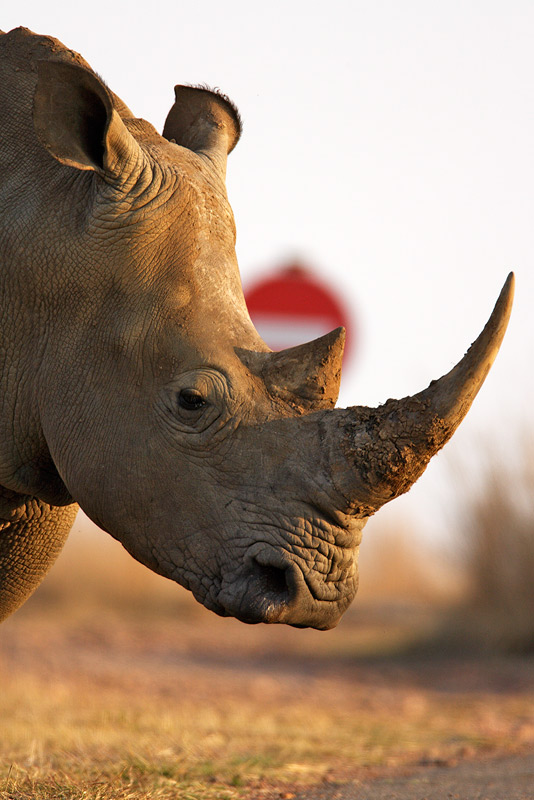Not even Africa’s wildlife sanctuaries can escape the influence humans have on the environment and in most Wilderness Reserves across the world human Influence is clearly visible.
Amur Falcon
(Falco amurensis)
In the image above the Amur Falcon used a manmade wooden stake as perch to engage in its daily aerobic exercise routine.
Although the perch is not natural, it has no detrimental effect on the final image.
Whether it’s a two spoor road, build structures or just an old wooden fence post, this could be any object that does not form part of the traditional wilderness landscape.
Objects not normally found in the subject’s natural environment – information boards, electric pylons and road signs to mention a few, can creep into your images.
This list could even be extended to altered natural objects – sawed off tree trunks or even fauna and flora introduced by human activity.
Leopard
(Panthera pardus)
The leopard was photographed in the world renowned Kruger National Park, the structure might provide valuable research information to humans.
But the leopard accepts this manmade structure as part of his natural environment and a resource at his disposal.
Could this be his favourite resting place or just another valuable lookout point to scan his territory?
These and other objects are all around us, and yes they might be necessary, but for the creation of images depicting the subject in its natural environment these objects could be detrimental.
As photographer you must be cautious not to include these manmade alterations as part of the wildlife scape as this could ruin your perfect safari images,
unless you want to portray nature’s adaptability to human interference by adding it to your wildlife scape.
White rhinoceros
(Ceratotherium simum)
Road signs might be used in recerves to manage access to restricted areas, or birds might deside these sign might just be the ideal perch.
But by adding the road sign as part of the image above definitely ruins the image.
To the photographer’s annoyance, these posts are frequently selected by birds over more natural perches, but as wildlife photographer these opportunities can be turned into an advantage.
Rufous-naped Lark
(Mirafra africana)
This Rufous-naped Lark preferred the sign post as perch, changing my position to ensure the sign post don’t obstruct the subject together with well-timed
depression of the shutter paid off to capture the bird in mid-air without the sign post visible.
With scientific research conducted in game reserves it’s inevitable that you would eventually end up with a tagged or collared subject.
Tagging provides researchers with valuable information, bird migrations can be followed, radio collared big cats could easily be found in their territory during research,
but for wildlife photography this is just another manmade object to be avoided. But if the subject is a scarce species don’t be discourage, you might assist the researchers by providing photographic evidence.
White rhinoceros
(Ceratotherium simum)
This Rhinoceros image shows the effect ear tags could have.
Wildlife photography is about patience all I had to do is to wait for the Rhinoceros to turn her ear and hide the tag from view.
White rhinoceros
(Ceratotherium simum)
But man’s influence on the environment can also be to the photographer’s advantage.
Places like Marievale Bird Sanctuary thrive due to the creation of the wetland.
A small weir not only attracts wildlife but could provide you with magical surroundings.
Little Egret
(Egretta garzetta)
The little egret uses the weir to forage for food. But the weir provided me with the most interesting and colourful motion pattern as backdrop.
There is no rules with regards to the inclusion of manmade object in your images.
My suggestion would be to take the images regardless of undesirable objects that might be included.
As stated in one of my previous blogs, the image design process start as soon as you approach the subject – be on the lookout for any undesirable objects you might want to exclude.
As photographers we can also benefit from the human influence in nature – as can be clearly seen from the Little egret at the weir, and the image of the Amur Falcon.









It's interesting how animals adapt and utilize man-made objects in their environment.
ReplyDelete